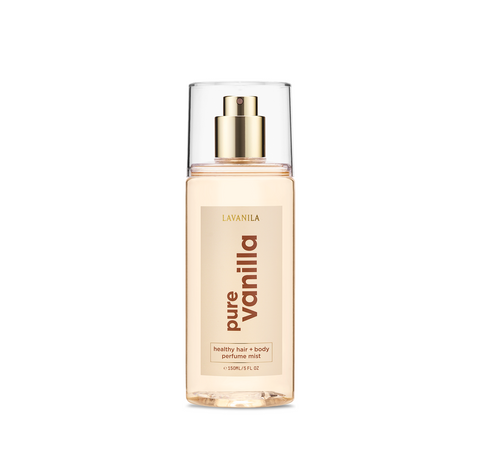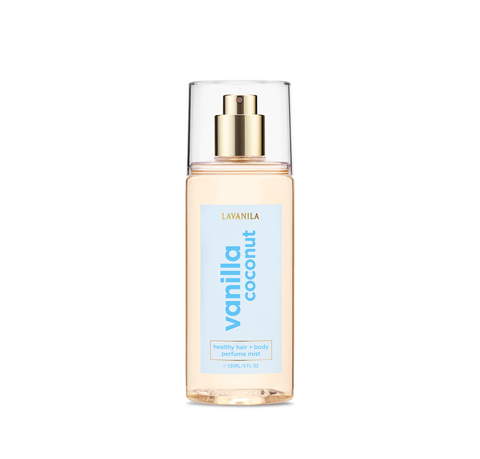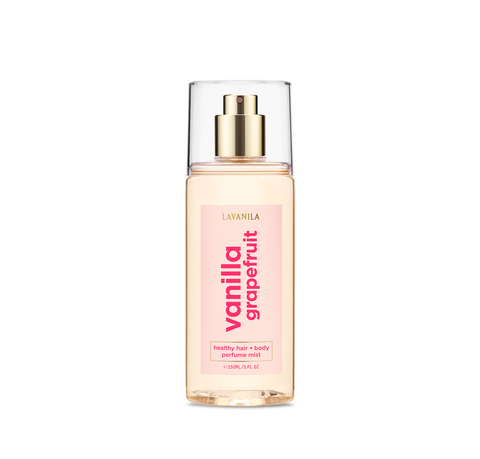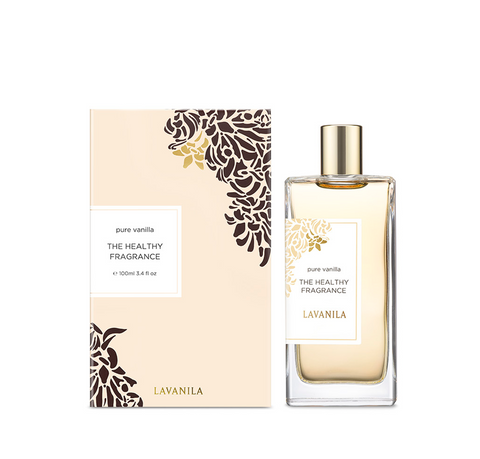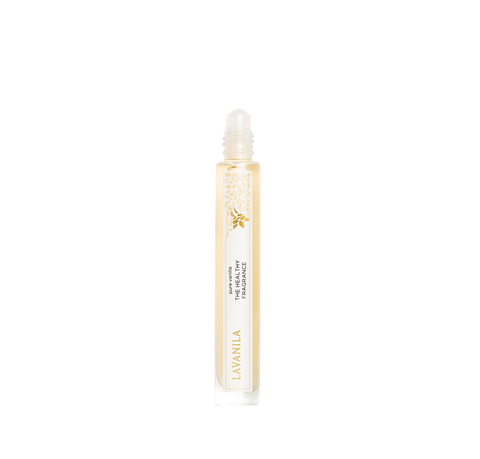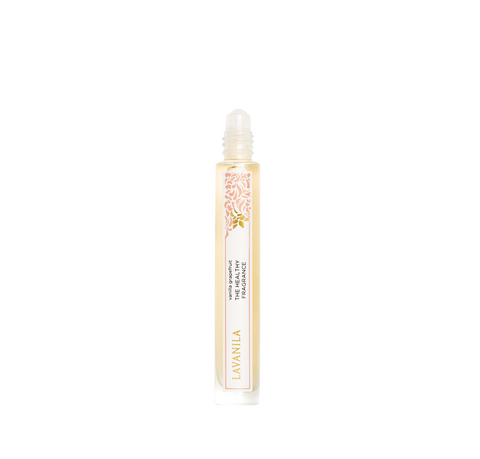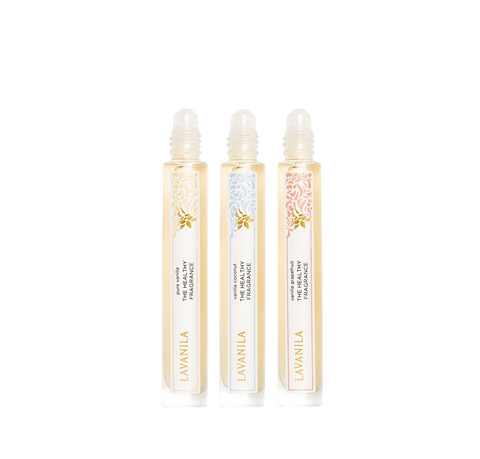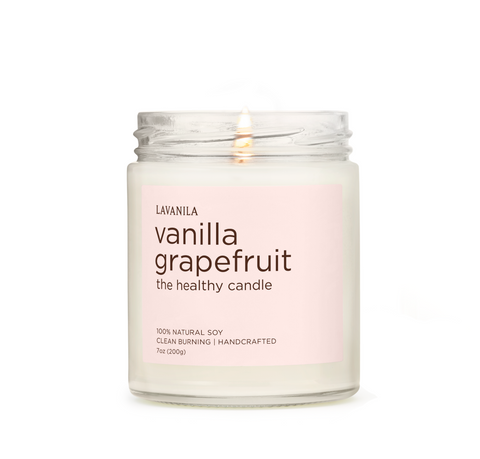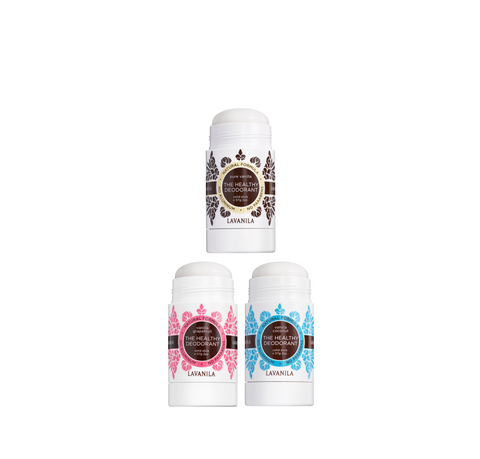Is perfume toxic? That question pops up more now than ever. People wonder what’s really inside a bottle, how chemicals in perfume affect the body, and whether a perfume toxicity rating can help them choose safer scents. This piece starts with clear facts and plain talk so you can decide what to wear with confidence. Right away: is perfume toxic depends on what’s in it, how much you use, and how your body responds — and knowing the common chemicals in perfume and how ratings work gives you control.
15% Discount on Your First Order
Subscribe for exclusive sales and promo codes
- Enjoy a 15% discount on your first purchase
- Be the first to know about our special sales and promotions
- Receive unique promo codes available only to our subscribers
Is Perfume Toxic? Understanding the Debate
People wonder is perfume toxic because fragrances are complex mixes. Some formulas are mostly natural; others use many synthetic materials. Whether a scent is toxic is not a single yes/no — it’s a question of ingredients, concentration, and personal sensitivity.When we talk about is perfume toxic, we mean that the product could contain chemicals in perfume that may cause irritation, hormonal disruption, or other harms for some people. That’s why clarity matters. Use simple steps — read labels, learn about perfume toxicity rating systems, and pick scents made with cleaner, transparent ingredients.
What Are the Hidden Chemicals in Perfume?
Most modern perfumes are made from dozens — sometimes hundreds — of raw materials. Many of those show up simply as “fragrance” on a label. Those hidden chemicals in perfume can include preservatives, solvents, synthetic musks, and plasticizers. Some of these ingredients are common across the industry and may raise health concerns for certain people. Knowing the typical categories of chemicals in perfume helps you spot red flags and pick gentler options.
The Most Common Synthetic Ingredients
Here are categories you’ll often find inside mass-market formulas:
-
Phthalates (used to help scent cling longer)
-
Synthetic musks (common fixatives)
-
Parabens (preservatives in some cosmetic lines)
-
Petroleum-derived solvents or nature-identical aroma chemicals
Many of these chemicals in perfume have been studied because of possible links to hormone effects, persistence in the environment, or skin reactions. For example, research has flagged phthalates and certain synthetic musks for endocrine and environmental concerns. That doesn’t mean every product with trace amounts is automatically dangerous, but it does mean consumers benefit from clear ingredient lists and safer choices.
 Lavanila’s aloe-based mists offer a clean, gentle way to adapt with the seasons while nourishing your hair and uplifting your senses all year long.
Lavanila’s aloe-based mists offer a clean, gentle way to adapt with the seasons while nourishing your hair and uplifting your senses all year long.
Why Many Perfume Labels Don’t Tell the Whole Story
U.S. labeling rules allow fragrance formulas to be listed under the single word “fragrance.” That umbrella term can hide dozens of chemicals in perfume, including synthetics and trade-secret mixes. Because the word “fragrance” can represent many ingredients, a simple ingredient list often doesn’t answer the core question: what am I breathing and wearing? That opacity is why people look for third-party ratings and brands that share fuller ingredient details.
What Does a Perfume Toxicity Rating Really Mean?
A perfume toxicity rating is a tool that summarizes potential hazards in a product based on ingredients, available studies, and known health endpoints. Ratings are not perfect, but they give a practical snapshot: they help you compare products and find items with lower hazard profiles. When people ask “what does perfume toxicity rating mean,” they want a quick gauge of safety — and that’s what a thoughtful rating aims to deliver.
How Ratings Are Calculated
Most rating systems look at the ingredients list and then compare each ingredient against toxicity databases. Scores weigh factors like cancer risk, hormone disruption, skin irritation, and how much scientific data exists about each chemical. The final perfume toxicity rating is a combined view of hazard plus how much research backs it up. In short, the score is based on evidence about ingredients, not brand promises.
Why Consumers Should Pay Attention
A clear perfume toxicity rating helps shoppers in three ways:
-
It highlights products with fewer flagged chemicals.
-
It points out items with little or no safety data (uncertainty matters).
-
It gives a basis for comparison when labels say only “fragrance.”
If you want to reduce exposure to questionable chemicals in perfume, look for products with low hazard scores and high transparency. Ratings don’t replace personal judgment, but they do make choice easier and safer.
How Chemicals in Perfume Affect the Body
When you apply perfume, very small amounts of ingredients contact your skin and the air around you. Chemicals in perfume can act in three main ways: cause immediate irritation, trigger an allergic reaction, or — with repeated exposure to certain compounds — possibly contribute to longer-term risks. Individual responses vary a lot: one person’s mild sniffle can be another’s serious irritation.

cruelty free

paraben free

phthalate free

all natural fragrance
Short-Term Reactions You Might Notice
Short-term reactions from chemicals in perfume are usually easy to spot:
-
Sneezing, watery eyes, or a stuffy nose
-
Headache or lightheadedness after strong scent exposure
-
Skin redness, itching, or a rash where perfume touched the skin
So, is perfume toxic for you? Most of these reactions are not systemic poisoning — they’re irritation or sensitivity. Reducing exposure, choosing gentler formulas, and trying small amounts can help you avoid short-term problems.
Possible Long-Term Health Concerns
Scientists continue to study long-term effects of chronic exposure to some fragrance chemicals. Research has linked certain compounds used in perfumery — notably some phthalates and persistent synthetic musks — to hormonal changes and environmental accumulation. Epidemiology and lab studies have raised questions about links to reproductive and metabolic effects for some chemicals, though results vary by compound and exposure level. That’s why many experts encourage caution and favor reducing exposure to materials with known hazard signals.
Are All Perfumes Toxic, or Are Some Safer?
The short answer: not all perfumes are equally risky. Is perfume toxic is a blanket question that misses nuance. Some fragrances are formulated to minimize flagged chemicals and use botanical or nature-derived materials. Others prioritize long-lasting synthetic fixatives and complex aroma chemicals. A safer scent is one with transparent sourcing, low-hazard ingredients, and strong testing. A lower perfume toxicity rating is a helpful signal — but it’s one of several things to consider.
Comparing Synthetic and Natural Formulas
Synthetic formulas often include durable aroma molecules that are less expensive and longer-lasting. Natural formulas tend to use essential oils, botanical extracts, and nature-derived carriers like sugarcane alcohol. Which is safer? Natural does not automatically equal harmless: essential oils can still irritate or sensitize some people. But when natural formulas are crafted with clean sourcing and careful testing, they reduce exposure to many of the long-standing concerns tied to certain petrochemical-derived aroma ingredients. For consumers looking to lower exposure to commonly discussed chemicals in perfume, carefully made natural fragrances can be a good option.
What Science Says About Safer Alternatives
Science and regulators encourage reducing exposure to the most concerning chemicals. Rating systems and scientific reviews point to safer choices: products that avoid phthalates, synthetic musks, and other materials with red flags. Third-party databases and studies can guide shoppers toward low-hazard formulas, and brands that publish full ingredient lists make it easier for science to assess risk. Choosing products with clean ingredient profiles and transparent testing reduces uncertainty around perfume toxicity rating and personal exposure.
How perfume impacts indoor air quality — chemicals in perfume and VOCs you should know
When you spray or mist a fragrance, tiny bits of that scent go into the air around you. Many of those bits are called volatile organic compounds — or VOCs — and they move easily from liquid into gas at room temperature. VOCs are common in personal care items, and the mix that makes a perfume smell can add many different VOCs to the room’s air. That matters because indoor air levels of VOCs are often higher than outdoor levels, and repeated use of scented products raises the total load of airborne chemicals in your home or workplace.
Volatile Organic Compounds (VOCs) explained — and why people are concerned about is perfume toxic because of them
VOCs is a simple label for lots of different molecules that evaporate easily. Some VOCs are harmless at low levels; others can irritate the eyes, nose, or throat. A few are linked to stronger health concerns when exposure is high or frequent. Scientists and public-health groups study VOCs because they can affect breathing, headaches, and indoor air quality, and because some VOCs are linked to longer-term risks. When people wonder is perfume toxic, they’re often worrying about the VOCs that a scent emits.
Why chemical scents linger in your environment — what chemicals in perfume have to do with it
Not every fragrance ingredient behaves the same way in air. Some aroma molecules evaporate and disappear quickly. Others stick around longer or break down into other tiny particles. Two common reasons chemical scents linger are:
-
The fragrance contains molecules that are semi-volatile or slow to break down.
-
The molecules adsorb onto fabrics, walls, and carpets, then release back into the air over time.
That’s why a small spray in a closed room can leave a noticeable scent for hours, and why indoor air can hold a complex mix of chemical fragments after many sprays. Studies that sampled fragranced products found more than one hundred different volatile chemicals released from everyday scented goods, even those labeled “natural” or “green.” That complexity is a core part of the conversation about is perfume toxic — not every chemical is harmful, but the mix matters.
The link between perfume toxicity and skin sensitivity — why some people ask “Is perfume toxic for me?”
Skin is a barrier, but it also absorbs small molecules. For some people, certain fragrance molecules trigger reactions when they touch skin. That’s why concerns about is perfume toxic are often personal: two people can wear the same scent and get very different responses.
Common skin reactions tied to fragrances:
-
Local irritation (redness, itch) where the product was applied.
-
Contact dermatitis, which can appear as a rash after repeated exposure.
-
Worsening of eczema or other skin conditions in sensitive people.
A lot depends on the mix of chemicals in perfume and on your own skin type. Even natural plant oils can be sensitizers for some people, so sensitivity is not just a synthetic-vs-natural issue — it’s about the specific molecule and how your skin reacts.
Why some skin types react more strongly to chemicals in perfume
Several reasons explain why reactions vary:
-
Broken or dry skin lets more molecules through.
-
People with eczema or rosacea already have a weakened barrier and can react more easily.
-
Repeated exposure increases risk — small exposures over time can sensitize the skin.
Genetics and immune-system differences also play a role. If your skin has reacted to scents before, you’re not alone — many who ask “Is perfume toxic?” really mean “Will this perfume trigger my skin?” The safest path is to patch-test a scent before regular use and pick formulas designed for gentle wear.
Choosing gentle options for everyday wear — how perfume toxicity rating can guide you
If you want to lower the chance of a reaction, use simple rules that work in daily life:
-
Look for products with full ingredient lists so you can check for known irritants.
-
Prefer formulas that state “paraben free” or “phthalate free” when those claims are on the brand’s product page.
-
Try a small amount on the inside of your wrist and wait 24–48 hours before regular use.
Perfume toxicity rating tools can help here: a clear rating simplifies lots of technical data into an easy-to-read signal. Use ratings as a filter, not as the only factor. A low perfume toxicity rating often reflects fewer flagged chemicals and clearer ingredient disclosure, both useful when choosing a gentle daily scent.
Decoding perfume labels — what “fragrance” really means when you read an ingredient list
A single word — “fragrance” or “parfum” — can hide a long list of raw materials. U.S. regulations allow brands to use that umbrella term for trade-secret blends, which keeps formulas proprietary but leaves shoppers guessing. If you’re trying to answer is perfume toxic for a given bottle, the label’s use of “fragrance” makes it harder.
Practical label tips:
-
If a product lists a full ingredient panel (not just “fragrance”), that’s a transparency win.
-
Look for clear calls-outs like “all natural fragrance” or “botanical fragrance blend” and check the product page for details.
-
Beware claims alone; a trustable brand will give you specifics or third-party data you can verify.
The lack of ingredient transparency — how it affects perfume toxicity rating and trust
When brands use vague labeling, it raises two problems:
-
Ratings become harder to calculate accurately because raters need ingredient names to assess hazard.
-
Shoppers can’t easily compare products on the same terms.
That’s why many people push for brands to disclose more. A product that lists botanical oils, alcohol sources, and botanical extracts lets consumers and scientists check whether flagged chemicals are present. Transparent ingredient pages let a perfume toxicity rating be grounded in real data instead of guesswork.
How to read labels more critically — practical steps to spot safer perfumes
When you look at a fragrance product page, try this quick checklist:
-
Is there a full ingredient list on the product page (not just “fragrance”)?
-
Does the brand call out the source of alcohol (for example, sugarcane alcohol) or the type of fragrance blend?
-
Are there clear “free-from” claims shown on the same product page (for example, “paraben free” or “phthalate free”)?
-
Is the product described as “botanical fragrance blend” or as containing “nature-identical oils”? If so, read the specifics — nature-identical does not always mean identical to an essential oil.
These checks let you judge what the label reveals about chemicals in perfume and make the perfume toxicity rating more meaningful to you. If a page names most ingredients, you can make a smarter choice for daily wear.
Natural fragrance vs. chemical perfume — is perfume toxic less often when it’s natural?
“Natural” and “chemical” are not perfect opposites. Natural fragrances come from plant extracts or essential oils. Chemical or synthetic fragrances include lab-made aroma molecules and nature-identical chemicals. Natural blends can still cause sensitivity in some people, but they usually avoid certain long-standing industry concerns linked to some synthetic groups. If your primary question is “Is perfume toxic?”, moving toward cleaner, well-tested natural blends can lower exposure to a handful of frequently flagged chemicals.
How plant-based scents are made — and what that means for chemicals in perfume
Plant-based scents are created by:
-
Distilling essential oils from flowers, woods, peels, or spices, or
-
Using botanical extracts and careful blending by perfumers who work with natural raw materials.
Because these ingredients come from plants, they often contain a complex mix of molecules rather than one or two large synthetic fixatives. That natural complexity can give depth and nuance without relying on some synthetic helpers that have raised concerns. Still, natural does not automatically equal non-irritating — that’s why careful formulation and stability testing matter.
The benefits of cleaner ingredients — how a better perfume toxicity rating shows up in daily life
Choosing a fragrance with a cleaner ingredient profile can change your everyday experience:
-
Fewer surprise reactions and less chance of irritation.
-
Simpler ingredient lists make it easier to check for known problematic groups.
-
Brands that publish full lists and ingredient sources make it easier to compare perfume toxicity rating scores.
Look for product pages that clearly list ingredients and explain their sources; that transparency is the real benefit. For example, some healthy fragrance lines explain they use organic sugarcane alcohol and botanical fragrance blends, and they list key botanical extracts right on the product page — a level of detail that helps shoppers decide if a perfume toxicity rating fits their needs.
Why Natural Perfumes Are Better for Daily Use
If you worry about whether perfume is toxic, choosing a natural perfume for everyday wear changes the story. Natural formulas are built around botanical extracts and carefully chosen carriers, so they usually cut down on a set of commonly discussed chemicals in perfume. That can mean fewer surprise reactions, clearer information about what you’re wearing, and a gentler scent experience over time. Natural blends are not magic — they can still cause sensitivity for some people — but they reduce exposure to ingredients that often show up on negative lists and that can push a poor perfume toxicity rating for conventional fragrances.
Safer for Sensitive Skin and Allergies
People with sensitive skin or seasonal allergies often notice a big difference when they switch to cleaner, plant-forward scents. Natural fragrances rely on essential oils, botanical extracts, and a milder alcohol base, which lowers the chances of running into certain flaggable ingredients from typical “chemicals in perfume” lists. For many, this shows up as less itching, less redness, and fewer flare-ups after repeated use.
Practical ways natural perfumes help daily wear:
-
They use gentler carriers and botanical blends that are chosen to be compatible with skin.
-
They avoid a set of industrial additives that can drive up a perfume toxicity rating for conventional scents.
A Healthier Choice for Long-Term Wellness
When people talk about whether perfume is toxic, they often mean long-term exposure and daily routines. Natural perfumes aim to reduce routine exposure to the kinds of petrochemical-derived fixatives and additives that sometimes accumulate in the environment or in product ratings. Over months and years, choosing natural blends can lower the steady background of certain flagged molecules in your personal care rotation.
That does not mean every natural raw material is guaranteed non-reactive. The difference is that naturally based lines tend to favor ingredients with more transparent safety histories, and they design formulas to be gentle for repeated use. That balance — fewer problematic synthetics and more botanical support — is why many users notice a calmer, more comfortable scent routine.
How Lavanila Reduces Perfume Toxicity Risks
From our perspective, reducing perfume toxicity risks starts with ingredient choices and testing. We craft our fragrances by hand with organic sugarcane alcohol and botanical fragrance blends rather than relying on long lists of industrial additives. That choice shapes what goes into the bottle and what does not.
Our Commitment to Safe, Natural Ingredients
We evaluate ingredients through a clear process that looks at safety, sourcing, performance, and environmental impact. That means we do more than pick pleasant-smelling raw materials: we require traceability, safety data, and gentle formulation standards before a component becomes part of a fragrance. You’ll see this reflected in product pages where we list key ingredients and explain the source of the alcohol and main botanicals.
Three practical ways our approach lowers risk:
-
We handcraft fragrances with organic sugarcane alcohol to avoid harsher denaturants and petrochemical carriers.
-
We favor botanical fragrance blends that use pure essential oils and nature-derived aroma materials.
-
We avoid a list of commonly flagged additives, which helps keep perfume toxicity rating concerns lower for our lines.
The Unique Experience of Lavanila Scents
We design scents to be wearable every day. That means attention to how they evolve on skin, how they feel from morning to night, and how they work with different body chemistries. Our natural approach aims to create layered, authentic aromas without relying on heavy synthetic fixatives. The result is a scent that feels warm, familiar, and personal rather than sharp or artificially prolonged.
If you want a concrete example, take a look at our signature Pure Vanilla, which blends Madagascar vanilla with botanical supporting notes for a soft, skin-like finish. The product page shows the botanical fragrance blend and the supporting extracts that enrich the scent.
Why Lavanila Believes in Transparency
Trust starts with clear information. When shoppers ask whether perfume is toxic for them, transparency helps more than slogans. We publish ingredient details on product pages and explain our formulation choices so people can make direct comparisons. That openness is part of how we help people assess perfume toxicity rating signals for themselves.
Ingredient Lists You Can Actually Trust
Instead of leaving “fragrance” as a black box, our product pages show the botanical fragrance blend and list the prominent extracts and carrier information. That means you can see whether a scent uses organic sugarcane alcohol, which botanicals are present, and which supporting extracts are included. When the label and the product page match up, you can judge both safety and scent more easily.
Setting a Higher Standard in Fragrance
Beyond listing ingredients, we set standards about what we exclude. Our Healthy Fragrance line highlights that formulations are free from phthalates, parabens, petrochemicals, aldehydes, and known skin irritants. That commitment is part of how we keep routine exposure to troubling chemicals in perfume lower for regular users. We combine that exclusion list with careful sourcing and small-batch perfumery to keep quality high and risk signals low.
Conclusion: Making Safer Choices With Natural Perfume
Final thoughts on chemicals in perfume: routine exposure matters. Small daily choices add up, and choosing natural, transparent fragrances reduces many of the common drivers of a poor perfume toxicity rating. Natural does not mean “no risk,” but a well-made botanical fragrance cuts down on several categories of concern and makes it easier to avoid ingredients that commonly trigger irritation or long-term alarm.
Explore Lavanila’s collection of safer alternatives
If you want to experience a cleaner fragrance approach, explore our Healthy Fragrance collection. You’ll find the signature Pure Vanilla as well as Vanilla Grapefruit, Vanilla Coconut and other blends that show how botanical perfumery can be both beautiful and mindful. Each product page lists the botanical fragrance blend and ingredient highlights so you can compare and choose with confidence.
 Clean and uncomplicated
Clean and uncomplicated

 Featured In
Featured In







vegan

gentle formula

100% recylable

aluminum free
